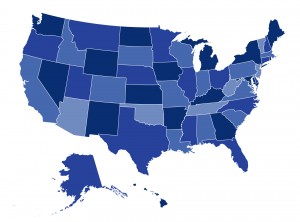
By Justin Giovannelli, JoAnn Volk, Kevin Lucia, Ashley Williams, and Kayla Connor
In improving access to quality coverage, the Affordable Care Act requires insurers to cover a minimum set of medical benefits known as “essential health benefits.” To implement this requirement, states select “benchmark plans,” which set a standard for what is defined as adequate coverage in their state.
The Department of Health and Human Services (HHS) indicated that the state benchmark approach was a transitional policy. HHS revisited its rules earlier this year and provided states with the opportunity to select a new benchmark for the 2017 plan year using the same process and plan options available in 2014.
In a new blog post for the Commonwealth Fund, Justin Giovannelli, JoAnn Volk, Kevin Lucia, Ashley Williams, and Kayla Connor reexamine state approaches to selecting EHB benchmark plans and find that although most states continued to define their essential benefits as they did before, there is still a need for data to inform policymakers about enrollees’ ability to actually access the care the essential health benefits package was designed to provide. This post reminds us that in order to understand the experience enrollees are having and evaluate the effect of federal policy changes, regulators must be presented with a full view of how the essential health benefits policy is working. You can read the full post here.

